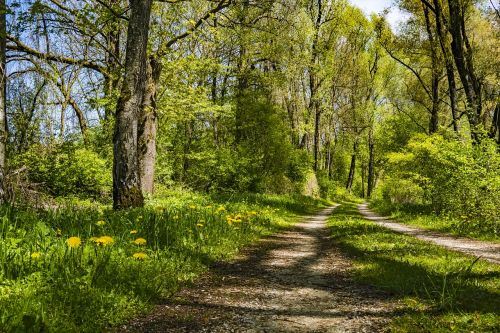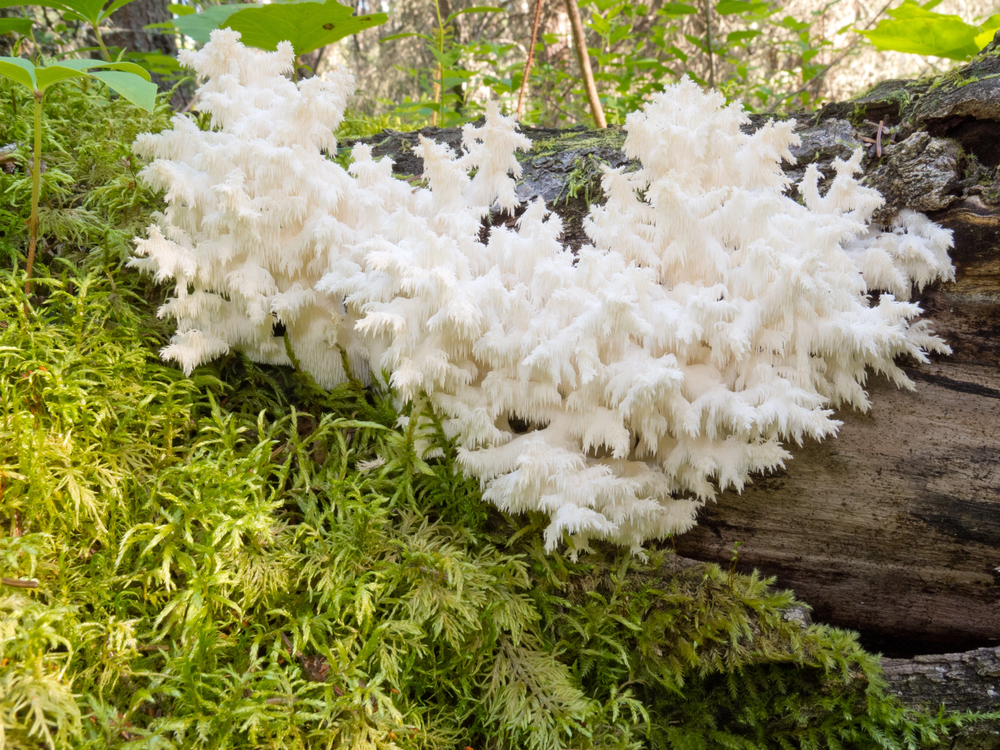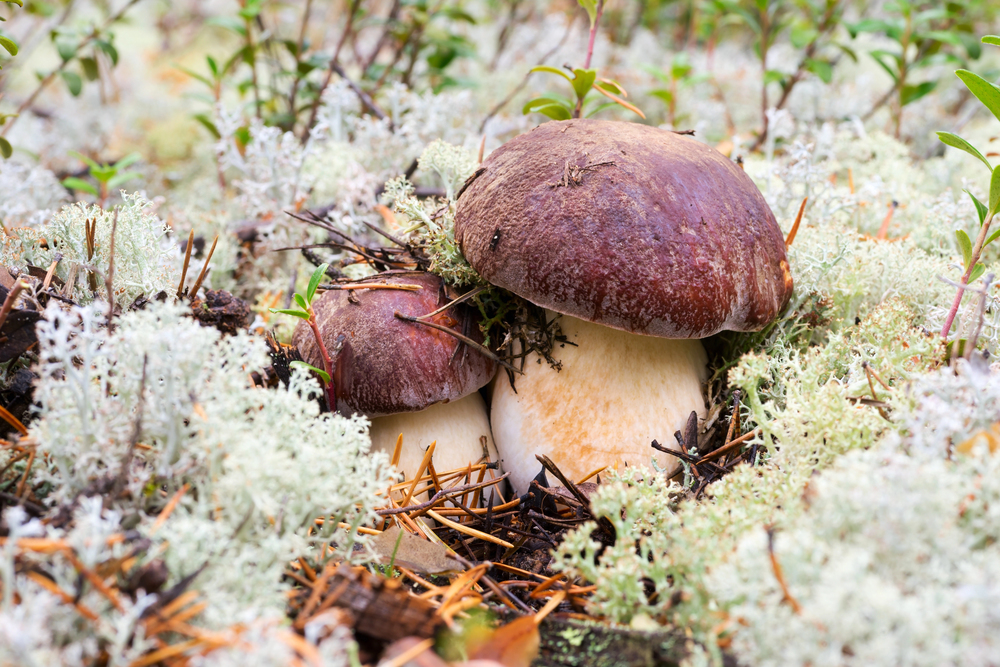Successful mushroom hunting relies heavily on understanding the intricate relationships between fungi and their host trees. While many foragers focus solely on identifying mushrooms, the true key to consistent finds lies in recognizing the right trees and their conditions. From the mighty oak harboring prized hen of the woods to dying elms attracting coveted morels, each tree species creates its own unique fungal ecosystem. As the seasons change, these arboreal partners play crucial roles in determining which mushrooms will emerge and when. Understanding these connections transforms a simple walk in the woods into a targeted and rewarding pursuit.
Key Takeaways
- Dead elm trees are prime spots for finding morel mushrooms, especially in spring when bark begins sloughing off.
- Oak trees host valuable edibles like hen of the woods, chicken of the woods, and chanterelles throughout spring and fall.
- Pine forests support prized mushrooms including king boletes, chanterelles, and matsutake, particularly in late summer through fall.
- Mature beech trees with damage or age signs indicate healthy mycelial networks supporting hen of the woods and lion’s mane.
- Birch trees commonly host valuable species like chaga and birch boletes in areas with consistently damp soil.
Oak Trees and Their Mushrooms
Abundance characterizes the relationship between oak trees and edible mushrooms, making these majestic hardwoods essential targets for mushroom hunters. Several prized edible mushroom species form symbiotic relationships with oak roots through mycorrhizal connections, creating ideal growing conditions in oak forests and woodlands.
The most sought-after oak-associated mushrooms include hen of the woods (Grifola frondosa), chicken of the woods (Laetiporus sulphureus), and chanterelles (Cantharellus cibarius). These species typically appear at the base of oak trees or on their trunks, with peak seasons varying from late spring through fall depending on regional conditions and species.
Dead or dying oak trees serve as particularly productive hosts for certain mushroom varieties, especially honey mushrooms (Armillaria mellea) and oyster mushrooms (Pleurotus ostreatus). When searching near oaks, foragers should examine both living trees and decomposing stumps or logs.
Successful oak-focused mushroom hunting requires identifying both red and white oak species, as certain mushrooms show preferences for particular oak varieties. Regular monitoring of known oak stands throughout the growing season maximizes chances of finding choice edible specimens.
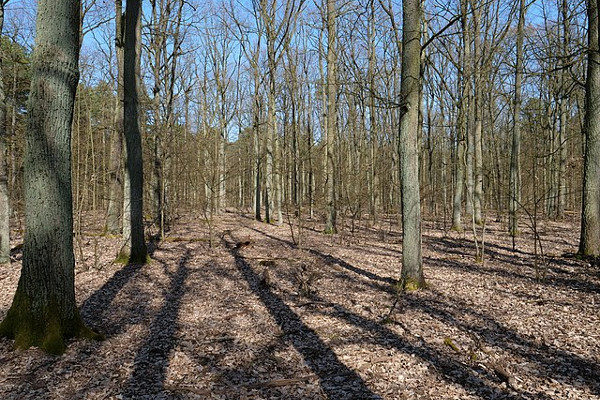
Hunting Around Dead Elms
Dead elm trees serve as prime hunting grounds for morel mushrooms, with their distinctive furrowed bark patterns and skeletal branches making them easy to spot in early spring. Experienced foragers know to search around elms showing signs of bark sloughing and decay, particularly during the first two years after the tree’s death when morel production peaks. The most productive elm sites typically occur where the bark has begun separating from the trunk while still partially attached, creating humid microclimates that morels favor between mid-April and late May in most regions.
Dead Elm Visual Identification
Successfully identifying dead elm trees can lead mushroom hunters to prized morels and oyster mushrooms. Dead elms possess distinctive characteristics that make them recognizable even after they’ve lost their bark and foliage, presenting ideal locations for mushroom growth.
Visual identification of dead elm trees relies on several key features that remain visible throughout decomposition. The trunk often exhibits a vase-like shape with multiple branches spreading outward from a central point, creating a distinctive silhouette against the forest backdrop.
- Bark Pattern: Look for a diamond-shaped pattern on any remaining bark, with alternating light and dark gray ridges that intersect to form distinct geometric shapes
- Branch Structure: Dead elms maintain their characteristic Y-shaped branching pattern, with smaller branches forming symmetrical forks
- Trunk Base: Search for buttress-like flares at the base of the trunk, which typically spread outward in a fan pattern
- Size Range: Focus on trees between 12-30 inches in diameter, as these mature specimens are most likely to host mushroom growth
During advanced stages of decay, the outer bark will slough off, revealing a smooth, light-colored surface underneath that’s particularly attractive to fungal growth.
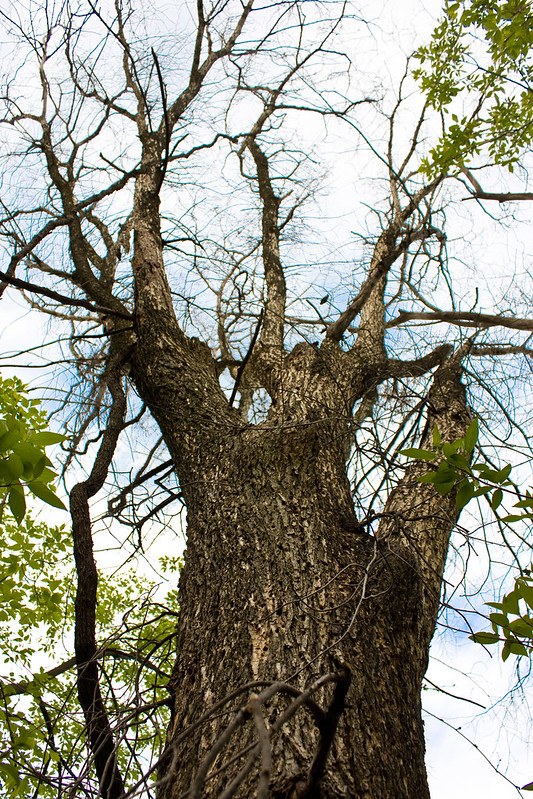
Morel Mushroom Seasonal Patterns
When spring temperatures consistently reach above 50°F, morel mushrooms begin emerging around dead elm trees in a predictable seasonal pattern. The progression typically starts in south-facing slopes and areas that receive more direct sunlight, as these locations warm up first in early spring. These initial growth spots often appear around elm trees that have died within the past 1-3 years.
As the season advances, morel hunters should gradually shift their focus to north-facing slopes and more shaded areas, where the soil takes longer to warm. The fungal mycelium responds to both soil temperature and dampness levels, with ideal conditions occurring when nighttime temperatures remain above 40°F and daytime highs reach 60-70°F.
The emergence pattern typically follows a 2-3 week window in any given location, with the entire season lasting 4-6 weeks regionally. Early season morels tend to be smaller and darker, while mid-season specimens often grow larger and display more pronounced honeycomb patterns. Experienced hunters track this progression, starting in valley bottoms and gradually moving upslope as the season progresses.
Bark Decay Warning Signs
Looking for morels around dead elm trees requires careful attention to bark decay patterns that indicate prime hunting conditions. The process of bark deterioration typically begins within 1-2 years after an elm tree dies, creating ideal growing conditions for morel mushrooms.
When examining potential hunting sites, experienced foragers identify specific stages of bark decomposition that signal promising morel habitat. The outer bark layer gradually separates from the underlying wood, creating damp-rich spaces where morel mycelium thrives.
Key bark decay indicators to watch for include:
- Vertical bark fissures with edges pulling away from the trunk, exposing lighter-colored wood beneath
- Large sections of loose, flaking bark that can be easily peeled by hand
- Dark, wet patches where bark has completely fallen away, revealing smooth wood surface
- Presence of other fungal growth, particularly shelf fungi, indicating advanced decomposition
These decay patterns are most productive for morel hunting when found on American elm trees that have died within the past 2-4 years. Understanding these visual markers helps foragers efficiently identify high-probability locations while avoiding areas where decomposition has progressed too far.
Pine Forest Mushroom Spots
Pine forests offer rich hunting grounds for several prized mushroom species, including chanterelles, king boletes, and matsutake. The ideal pine zones for mushroom hunting typically feature mature trees with well-established root systems, damp soil conditions, and a thick layer of fallen pine needles covering the forest floor. Successful foraging in pine forests requires focusing on areas where sunlight filters through partial canopy gaps, as these spots often create the perfect microclimate for mushroom growth while maintaining crucial moisture levels.
Common Pine Forest Species
Several sought-after edible mushroom species thrive in pine forest environments. These fungi form symbiotic relationships with pine trees through their underground mycelial networks, creating ideal growing conditions in the acidic soil beneath the pine needle duff layer. The ecological partnership between certain mushrooms and pine trees has evolved over millions of years.
Common Edible Pine Forest Mushrooms
- Saffron milk cap (Lactarius deliciosus) – Distinguished by its orange cap with concentric rings and orange milk when cut
- Slippery jack (Suillus luteus) – Recognizable by its brown cap with sticky coating and yellow pores underneath
- King bolete (Boletus edulis) – Features a brown cap, thick white stem, and white pores that age to olive-green
- Sweet tooth fungus (Hydnum repandum) – Identified by its pale orange to white cap and distinctive teeth instead of gills
These species typically fruit from late summer through fall, depending on regional rainfall patterns and temperature conditions. Proper identification is vital, as some toxic look-alikes exist within pine forests, making it important for foragers to learn distinctive identifying features and consult expert guides.
Finding Ideal Pine Zones
Having identified the key mushroom species that grow in pine forests, successful foraging depends on locating the most productive pine zones. The most fertile areas typically occur where mature pine stands meet transitions zones or natural clearings, creating optimal dampness and shade conditions for fungal growth.
Look for pine forests with a mix of age groups, particularly those containing trees between 20-60 years old that have developed extensive mycorrhizal networks. Areas with pine needle accumulation of 2-4 inches deep provide ideal substrate conditions, while allowing sufficient dampness retention for mushroom development.
The best pine zones often feature gentle slopes with northern or eastern exposures, which maintain higher dampness levels throughout the growing season. Avoid densely packed stands where little sunlight reaches the forest floor, instead focusing on areas with moderate canopy coverage of 40-70 percent.
Natural drainage patterns play a vital role, with slight depressions and areas near seasonal water flows proving especially productive. Scout for locations where different pine species intermingle, as these transition zones often support diverse mushroom populations through varying root associations and soil chemistry.
Maple Tree Mushroom Partners
Maple trees host some of the most sought-after edible mushrooms in North America. These deciduous giants create ideal conditions for fungal growth through their extensive root systems and rich leaf litter, particularly in older growth forests where organic matter has accumulated over decades.
Several prized mushroom species form mycorrhizal relationships with maple trees, exchanging nutrients and minerals through complex underground networks. The soil composition around maples, typically slightly acidic with high organic content, provides perfect growing conditions for these fungal partners.
- Hen of the Woods (Grifola frondosa) – Commonly found at the base of mature maple trees from late summer through fall
- Lion’s Mane (Hericium erinaceus) – Grows on dead or dying maple wood, often appearing higher up on the trunk
- Oyster Mushrooms (Pleurotus ostreatus) – Frequently colonizes fallen maple logs and stumps
- Black Trumpet (Craterellus cornucopioides) – Found in maple-dominated forests, especially near sugar maples
When hunting around maples, focus on areas with adequate humidity and inspect both living trees and deadfall, as different species prefer various stages of wood decomposition.
Beech Tree Fungal Friends
Abundance characterizes the rich fungal ecosystem surrounding beech trees, particularly in established hardwood forests. These majestic trees form symbiotic relationships with numerous edible mushroom species through their extensive root systems, creating ideal conditions for foraging enthusiasts.
Many prized edible mushrooms emerge from beech forests during spring and fall seasons, with species varying based on regional climate conditions. The beech tree’s smooth bark and dense canopy help maintain consistent dampness levels, which mushrooms require for proper development.
| Mushroom Species | Season | Edibility Rating |
|---|---|---|
| Hen of the Woods | Fall | Excellent |
| Lion’s Mane | Fall-Winter | Superior |
| Beech Milk Cap | Summer-Fall | Good |
| Beefsteak Fungus | Spring-Summer | Good |
| Coral Tooth | Late Summer | Excellent |
Foragers should focus their attention on mature beech trees, especially those showing signs of age or minor damage. The presence of shelf fungi or bracket mushrooms often indicates a healthy mycelial network beneath the soil, suggesting prime hunting grounds for various edible species.
When identifying beech-associated mushrooms, careful examination of both tree and fungus characteristics remains crucial for safe foraging practices.
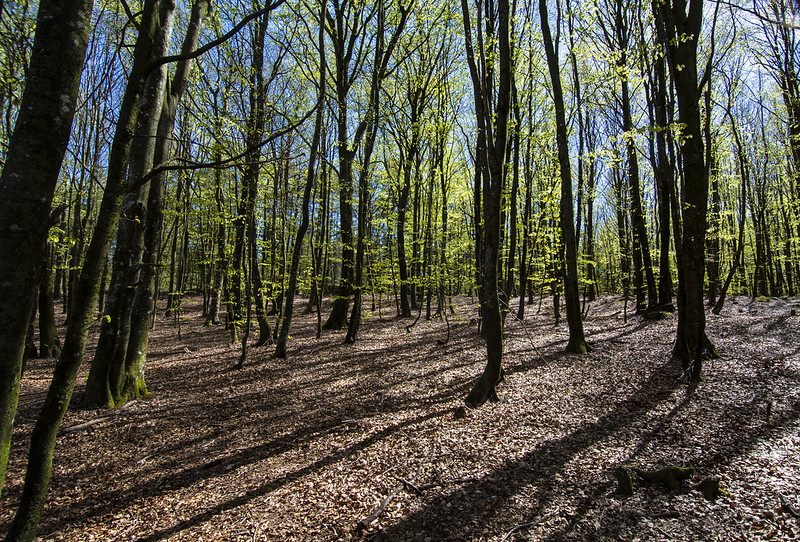
Aspen Grove Mushroom Gathering
Throughout the Rocky Mountain region, aspen groves harbor some of nature’s most coveted mushroom species, including chanterelles, boletes, and morels. These deciduous stands create unique microclimates with high soil dampness content and abundant leaf litter, providing ideal conditions for fungal growth during the late summer and early fall seasons.
Successful mushroom hunting in aspen groves requires understanding the specific characteristics that make these areas productive. The soil composition, typically rich in organic matter and slightly acidic, supports extensive mycorrhizal networks between trees and fungi.
- Look for mature aspen stands with trees at least 20-30 years old, as these support more established fungal communities
- Focus on north-facing slopes where moisture retention is higher, especially after rainfall events
- Search near fallen logs and in areas with dense leaf litter, which provide additional substrate for fungi
- Pay special attention to the grove’s edges where aspens meet conifers, as these transition zones often yield diverse species
The best harvesting times typically occur between July and September, when summer monsoons create ideal fruiting conditions. Careful observation of weather patterns and precipitation levels can help predict productive gathering periods.
Birch Tree Foraging Tips
Birch forests present another rich environment for mushroom enthusiasts, offering distinct species that form symbiotic relationships with these distinctive white-barked trees. Several prized edible mushrooms, including chaga and birch boletes, establish mycorrhizal connections with birch root systems, making these locations particularly productive for foraging.
When searching near birch trees, focus on areas where the ground remains consistently damp and contains decomposing leaves. The best seasons for birch-associated mushroom hunting typically span from late spring through early fall, with peak fruiting occurring after periods of rainfall.
Key species to look for include Leccinum scabrum (birch bolete), which displays a brown cap and dark scabers on its stem, and Inonotus obliquus (chaga), which appears as a black, charcoal-like growth on living birch trunks. Lactarius glyciosmus, known as the coconut milkcap, commonly fruits near birch trees in late summer.
Always identify multiple confirming characteristics before harvesting any mushroom species, and pay particular attention to the presence of white birch, yellow birch, or paper birch in the immediate vicinity, as different birch species may host varying fungal associates.
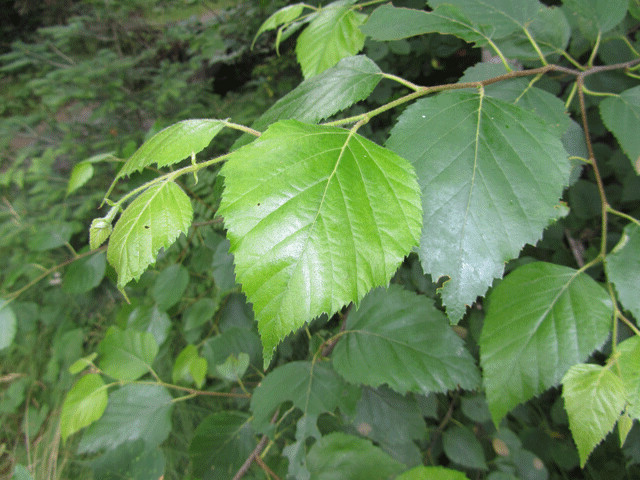
Poplar Tree Mushroom Hunting
Poplar trees create excellent habitats for several prized edible mushrooms, particularly in areas where these fast-growing trees establish mature stands. The rich organic matter from fallen leaves and decaying wood provides ideal conditions for fungal growth throughout multiple seasons.
Common Mushroom Species Around Poplars
- Oyster Mushrooms (Pleurotus ostreatus) – Frequently colonize dead poplar trunks and branches
- Morels (Morchella species) – Often appear around dying or dead poplars in spring
- Cottonwood Mushrooms (Tricholoma populinum) – Form mycorrhizal relationships specifically with poplar trees
- Aspen Bolete (Leccinum insigne) – Found near poplar roots, especially in late summer
- Lion’s Mane (Hericium erinaceus) – Grows on dead or dying poplar wood
Best Hunting Conditions
Successful mushroom hunting in poplar forests depends on specific habitat conditions. Productive spots typically have poplar trees that have grown for 20+ years, providing established root systems and mycelial networks. The ground should retain moisture without becoming waterlogged – look for areas where the soil stays damp between rains. The best zones contain both healthy poplars and some dead or dying specimens, as decomposing wood supports fungal growth. Partial tree cover creates ideal light conditions, where sunlight filters through the canopy rather than beating down directly. The forest floor should have a thick layer of fallen leaves and scattered dead branches, creating the organic matter mushrooms need to thrive.
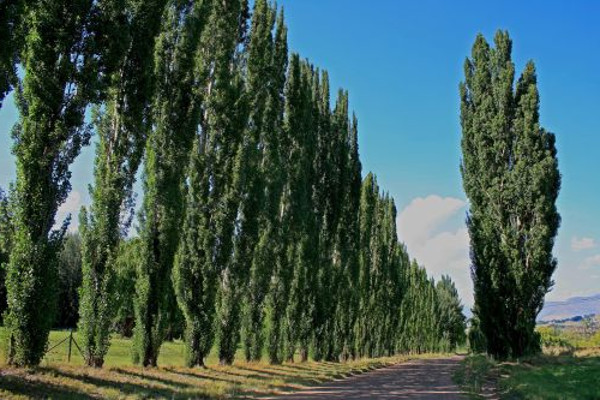
Fruit Tree Mushroom Connections
Orchard environments and fruit tree stands harbor distinctive mushroom species that often form beneficial relationships with cultivated trees. These mycorrhizal partnerships improve nutrient uptake and strengthen the overall health of fruit-bearing trees, while providing favorable conditions for mushroom growth.
Several edible mushroom species demonstrate strong associations with common orchard trees, particularly in mature growing environments. The decomposing wood and enriched soil around fruit trees create prime conditions for fungal colonization and fruiting body development.
Key mushroom species commonly found near fruit trees include:
- Morels (Morchella species) – frequently appear beneath old apple trees, especially in abandoned orchards during spring
- Wine Cap mushrooms (Stropharia rugosoannulata) – thrive in wood chip mulch around cherry and plum trees
- Oyster mushrooms (Pleurotus ostreatus) – colonize dead or dying branches of apple, cherry, and pear trees
- Ringless Honey Mushrooms (Armillaria tabescens) – often found at the base of stressed or aging fruit trees
When foraging near fruit trees, careful attention must be paid to proper identification, as both edible and toxic species can occur in orchard settings. Regular monitoring throughout the growing season maximizes harvest potential.

